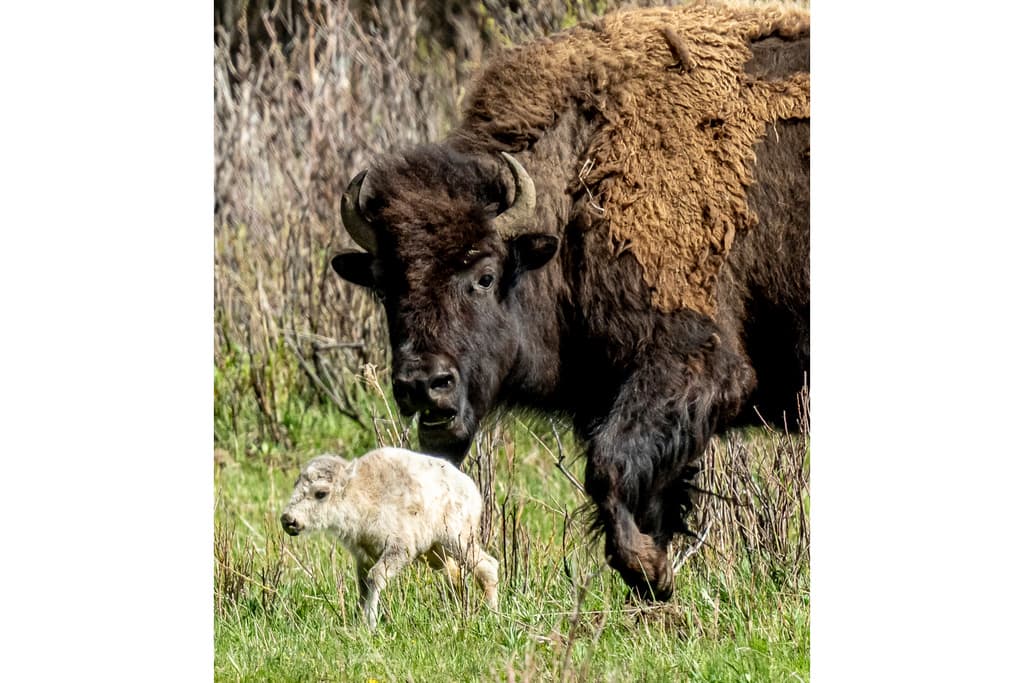A "remarkably rare" white bison calf has been spotted in the American national park Yellowstone.
For indigenous peoples, the birth carries a message about the future.
It is the first time a white calf has been born in the last wild bison herd in the USA, reports BBC, citing contemporary archives.
The unusual birth fulfils a prophecy about better times to come, according to members of the North American indigenous people, the Lakota. However, the birth is also seen as a sign that more needs to be done to protect the earth and its animals.
The birth of this calf is both a blessing and a warning. We must do more, says Arvol Looking Horse, spiritual leader of the Lakota people in the area, to the news agency AP.
For the Lakota people, the birth of a white bison is equivalent to the Second Coming of Jesus, says Looking Horse. Several other indigenous peoples see the white animal as a prophet with a message about the future and that something great is about to happen.
The sacred calf was first spotted in Lamar Valley in eastern Yellowstone at the beginning of June, probably shortly after it was born. Photographer Erin Braaten, visiting from Montana, then saw "something very white" in the middle of a bison herd crossing a river.
It was absolutely fantastic. I thought I would have a greater chance of photographing Bigfoot than a white bison calf, she says to BBC, referring to a mythical creature also known as Sasquatch.
The calf in Yellowstone is believed to be a "true white calf" and not an albino calf, as it has dark eyes.
Yellowstone is the world's oldest national park. It was established in 1872 and was added to UNESCO's World Heritage List in 1978.
The park features the world's largest area of geysers and hot springs, as well as magnificent waterfalls and deep canyon formations, where partially gulf-coloured rock formations can be seen.
The park is home to a large number of animals, including grizzly bears, black bears, elk, bison, and pronghorn antelope, as well as around 200 bird species.
Source: Nationalencyklopedin





